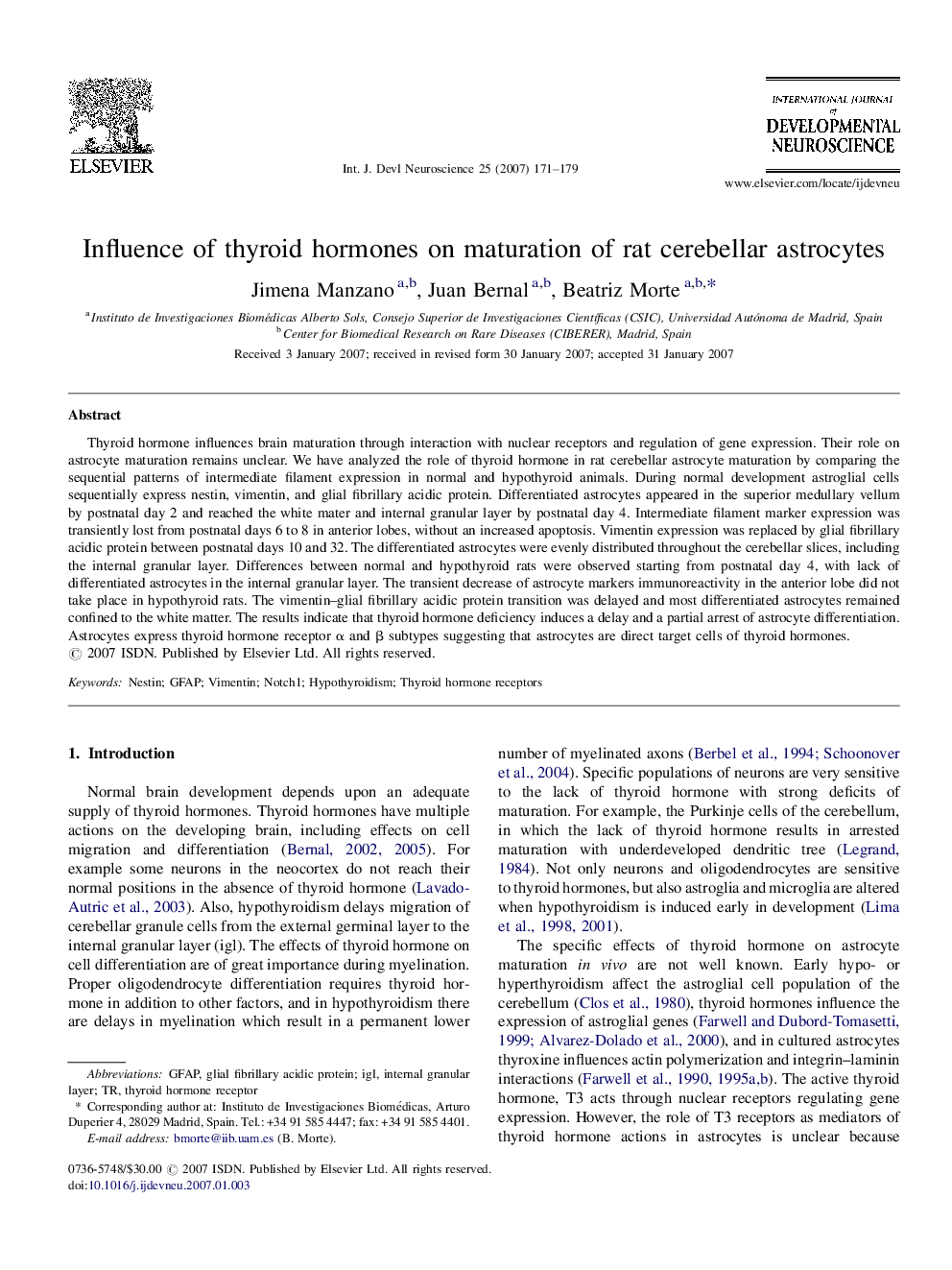| Article ID | Journal | Published Year | Pages | File Type |
|---|---|---|---|---|
| 2787218 | International Journal of Developmental Neuroscience | 2007 | 9 Pages |
Thyroid hormone influences brain maturation through interaction with nuclear receptors and regulation of gene expression. Their role on astrocyte maturation remains unclear. We have analyzed the role of thyroid hormone in rat cerebellar astrocyte maturation by comparing the sequential patterns of intermediate filament expression in normal and hypothyroid animals. During normal development astroglial cells sequentially express nestin, vimentin, and glial fibrillary acidic protein. Differentiated astrocytes appeared in the superior medullary vellum by postnatal day 2 and reached the white mater and internal granular layer by postnatal day 4. Intermediate filament marker expression was transiently lost from postnatal days 6 to 8 in anterior lobes, without an increased apoptosis. Vimentin expression was replaced by glial fibrillary acidic protein between postnatal days 10 and 32. The differentiated astrocytes were evenly distributed throughout the cerebellar slices, including the internal granular layer. Differences between normal and hypothyroid rats were observed starting from postnatal day 4, with lack of differentiated astrocytes in the internal granular layer. The transient decrease of astrocyte markers immunoreactivity in the anterior lobe did not take place in hypothyroid rats. The vimentin–glial fibrillary acidic protein transition was delayed and most differentiated astrocytes remained confined to the white matter. The results indicate that thyroid hormone deficiency induces a delay and a partial arrest of astrocyte differentiation. Astrocytes express thyroid hormone receptor α and β subtypes suggesting that astrocytes are direct target cells of thyroid hormones.
